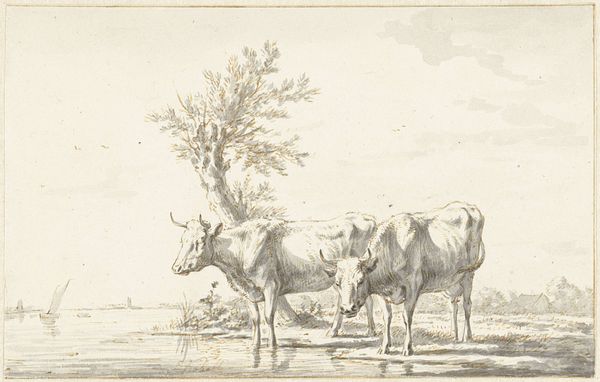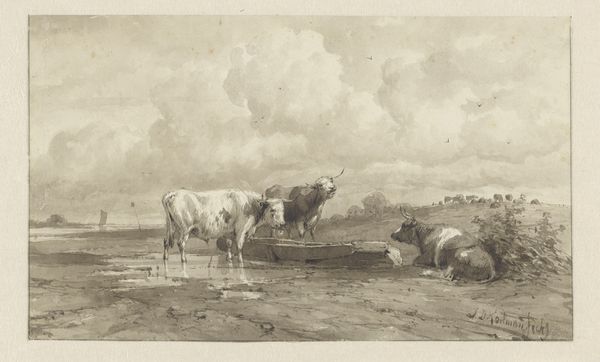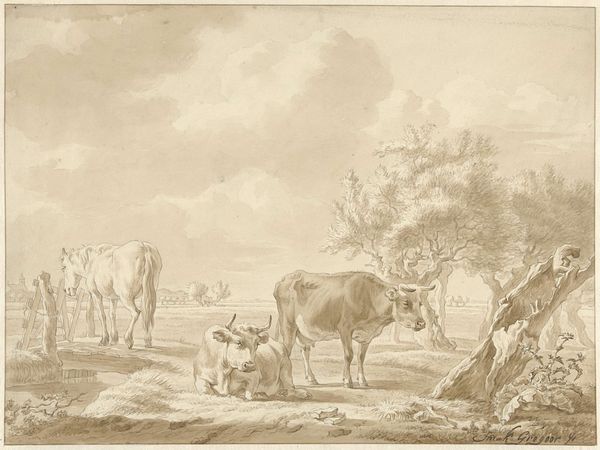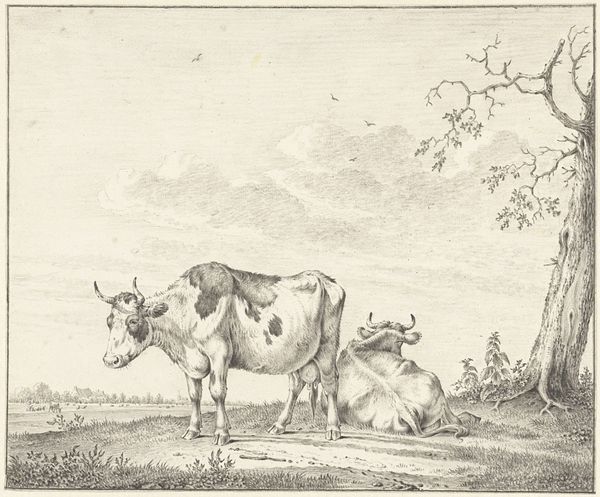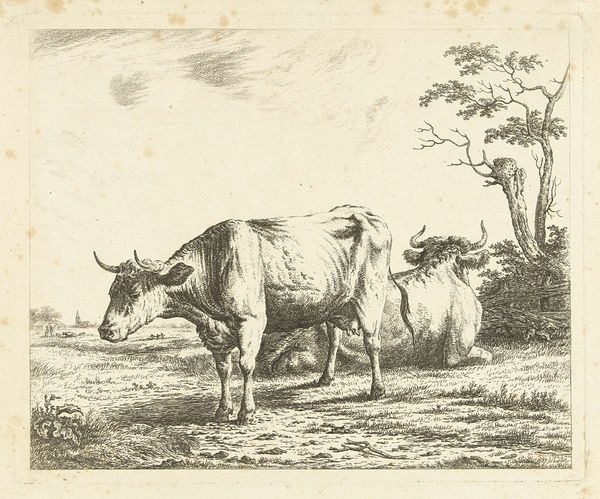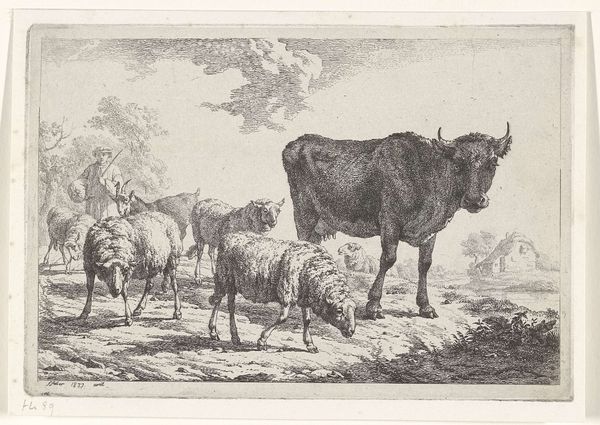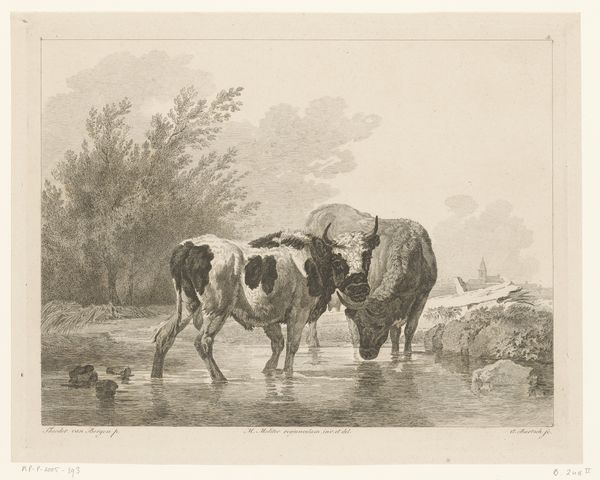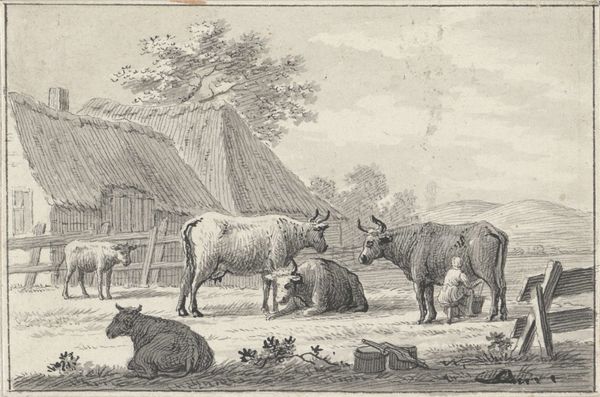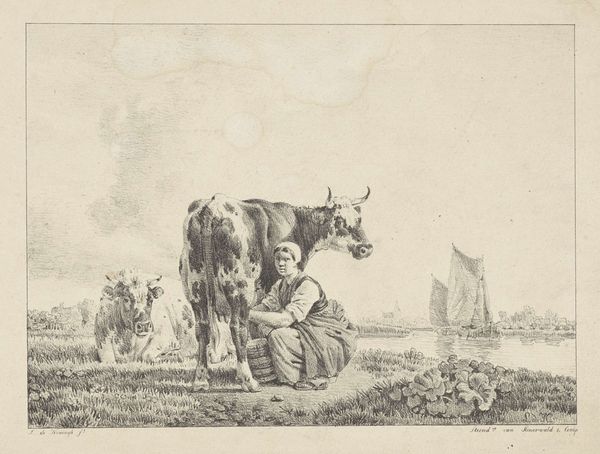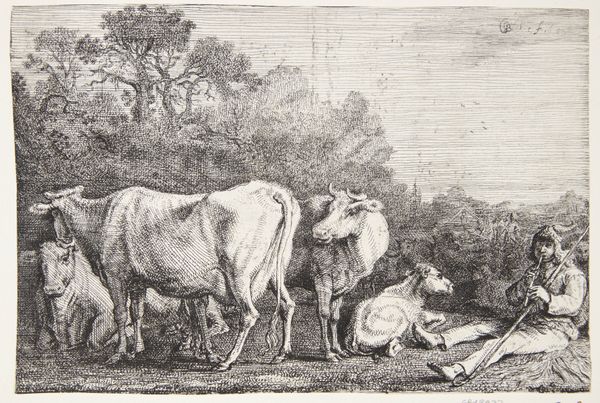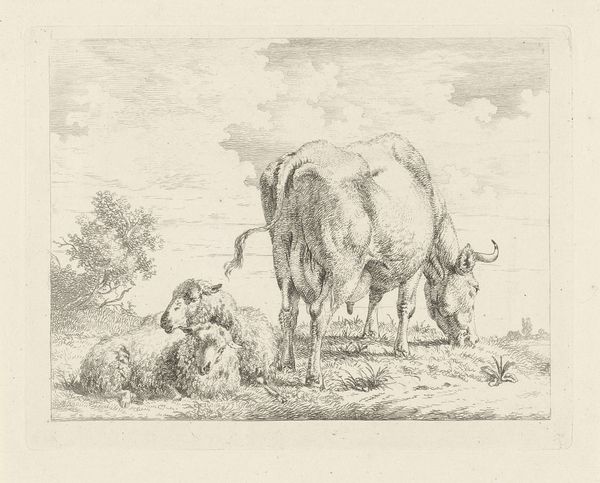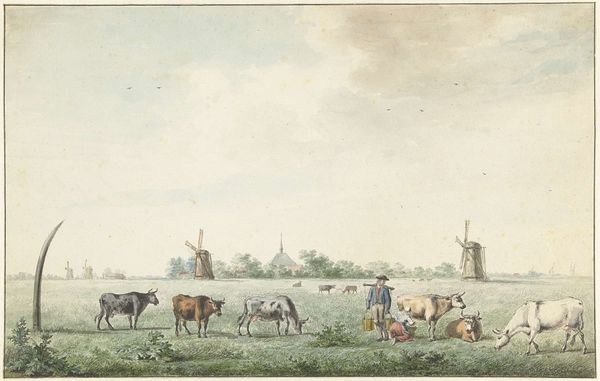
Vee in een weide aan het water nabij een molen 1805 - 1860
architectural sketch
amateur sketch
light pencil work
fantasy concept art
quirky sketch
pencil sketch
incomplete sketchy
sketchwork
pencil work
fantasy sketch
Dimensions: height 209 mm, width 334 mm
Copyright: Rijks Museum: Open Domain
Curator: Welcome. We’re standing before Hendrikus van de Sande Bakhuyzen’s “Cattle in a Meadow by the Water near a Mill,” created sometime between 1805 and 1860. Editor: It feels quiet, pastoral. The monochromatic wash emphasizes a certain stillness, almost a hushed reverence for the landscape. Curator: Precisely. Note how the artist utilizes the limited palette to create depth and texture. The varying densities of the wash articulate form beautifully—look at the subtle shading on the cows and the way the light reflects on the water’s surface. It’s a study in tone. Editor: I'm drawn to how the animals become symbols of pastoral labor and tranquility, central to 19th-century Dutch identity. The windmill, typically associated with Dutch industriousness, takes a back seat here, overshadowed by the bovine subjects and a sense of harmony between humans and nature. It is reminiscent of the Romantic movement's reverence for the natural world. Curator: An astute observation! Considering this work was made during a period of intense urbanization, might it serve as a gentle counterpoint to the social realities of the time? The cows could symbolize a longing for a simpler, agrarian past that was rapidly disappearing due to industrial advancement. Editor: Definitely. Furthermore, note the class dynamics at play. Who is granted the privilege of leisurely observing cattle? Bakhuyzen’s imagery speaks volumes about property, land ownership, and romanticizing the labor of a specific demographic. Curator: I appreciate how this work invites reflection not just on artistic technique, but on the complex social landscape of 19th-century Netherlands. It is precisely through such intersectional dialogue that we can grasp a more complete view of art's role. Editor: Indeed. This small artwork invites a significant reimagining of how we place human activity and art-making in a social and historical narrative.
Comments
No comments
Be the first to comment and join the conversation on the ultimate creative platform.
